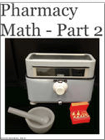
Figure 5.2.1 Diagram Illustrating Multiple Elimination Pathways with a One Compartment Model
return to the Course index
previous | next

Figure 5.2.1 Diagram Illustrating Multiple Elimination Pathways with a One Compartment Model
In Figure 5.2.1 ke is the excretion rate constant and km is the metabolism rate constant. Here we have two parallel pathways for elimination (with others as a shadow). We can write the differential equations for the four components shown in this diagram (X, U, M, Mu). There could be more pathways. It may be necessary to specify excretion by exhalation, in sweat, or as is commonly the case, more than one metabolic pathway.

Equation 5.2.1 Rate of Change of the Amount of Drug in the Body
Equation 5.2.1 includes terms for excretion and metabolism. The number (and type) of these elimination processes can be changed to accommodate a variety of possible routes of excretion or metabolism. Some of these processes may not be first order, however many can be represented by first order parameters.
The elimination rate constant, kel, represents the sum of all the ('first-order') rate constants so we can substitute kel for (ke + km) in Equation 5.2.1 to give Equation 5.2.2.

Equation 5.2.2 Rate of Change of the Amount of Drug in the Body
Dividing by V gives the Equation 5.2.3, which is the same as Equation 4.4.1 in Chapter 4.

Equation 5.2.3 Rate of Change of Drug Concentration

Equation 5.2.4 Rate of Elimination using Clearance Parameters
In Equation 5.2.4 the rate of elimination of drug from the central or plasma compartment is expressed in clearance terms, here, renal (CLR) and metabolic (CLM) clearance. The total body clearance (CL) is equal to the sum of the clearance terms in the model. In Equation 5.2.4 total body clearance, CL = CLR + CLM.
With more elimination pathways we sum all these process parameters to arrive at the elimination rate constant, kel, or total body clearance, CL. Thus the equation for rate of elimination, either with rate constant parameters or clearance parameters, is the same as before in Chapter 4. The integrated equation is given in Equation 5.2.5 or 5.2.6

Equation 5.2.5 Cp versus time with kel as the elimination rate parameter
![]()
Equation 5.2.6 Cp versus time with CL as the elimination rate parameter



Equation 5.2.7 Rate of Change of Cumulative Amount Excreted into Urine
Then substituting for Cp (= (Dose/V) • e-kel • t or = (Dose/V) • e-CL • t / V) we get

Equation 5.2.8 Rate of Excretion of Unchanged Drug into Urine
after integrating using Laplace transforms we get:

Equation 5.2.9 Cumulative Amount Excreted as Unchanged Drug versus Time

Equation 5.2.10 Total Amount Excreted as Unchanged Drug into Urine

Equation 5.2.11 Rate of Change of Amount of Metabolite in the Central Compartment
AND

Equation 5.2.12 Rate of Excretion of Metabolite into Urine
After integrating Equation 5.2.11 and 12 using Laplace transforms we get Equation 5.2.13

Equation 5.2.13 Cumulative Amount Excreted as Metabolite versus Time
Setting each exponential term, e-k • t, in Equation 5.2.13 to zero gives Equation 5.2.14 for the total amount excreted into urine as the metabolite.

Equation 5.2.14 Total Amount Excreted as Metabolite into Urine
Adding Equations 5.2.10 and 5.2.14 gives Equation 5.2.15.

Equation 5.2.15 Mass Balance - Total Amount Eliminated equals Dose

Figure 5.2.2 Plot of X, U, M and Mu versus Time
Click on the figure to view the interactive graph
In Figure 5.2.2 we have simulated amounts of drug in the body (X), unchanged drug in urine (U), metabolite in the body (M) and metabolite excreted in urine (Mu). The parameters used to create this figure were Dose = 500 mg, kel = 0.2 hr-1, fe = 0.25, fm = 0.75, and kmu = 0.5 hr-1. Note U∞ and Mu∞, 125 and 375 mg respectively, total 500 mg, the dose given.
Material on this website should be used for Educational or Self-Study Purposes Only
Copyright © 2001 - 2025 David W. A. Bourne (david@boomer.org)
 | Pharmacy Math Part Two A selection of Pharmacy Math Problems |
 |